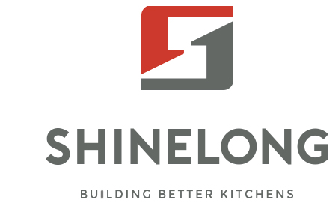اخبار
طراحی مебل آشپزخانه عملکردمند و ارگونومیک برای فضاهای تجاری
اصول طراحی ارگونومیک برای مبلمان آشپزخانه تجاری
ارتفاع قابل تنظیم ایستگاههای کاری برای وظایف متنوع
توانایی تنظیم ارتفاعات ایستگاه کار در هنگام انجام وظایف متنوعی که در آشپزخانه های تجاری یافت می شود، تفاوت را ایجاد می کند، باعث می شود کار برای کارکنان راحت تر و کارآمدتر شود. گزینه های ارتفاع قابل تنظیم اجازه می دهد تا این مناطق کاری با هر چیزی که روز به ارمغان می آورد، سازگار شوند، چه کسی مواد غذایی را برش دهد، همبرگر را برگرداند، یا سطوح را پس از سرویس پاک کند. برای مثال ایستگاه های آماده سازی را در نظر بگیرید آنها به طور کلی بین 36 تا 48 اینچ بالا کار می کنند بنابراین کارگران مجبور نیستند بیش از حد خم شوند یا به راحتی دست یابند، که باعث کاهش درد پشت و خستگی بازو می شود. بعضی از آشپزها در واقع ترجیح می دهند که ایستگاه هایشان کمی کوتاه تر باشد، شاید حدود 34 اینچ، از آنجا که ایستادن در ارتفاع مناسب در شیفت های طولانی بسیار مهم است. تحقیقات نیز این را تأیید می کنند؛ مطالعات نشان می دهد که توانایی تغییر ارتفاعات محل کار واقعاً استرس فیزیکی را کاهش می دهد، عملکرد را افزایش می دهد و احتمال آسیب دیدن در محل کار را کاهش می دهد. مقاله ای که اخیرا در Applied Ergonomics منتشر شده است حتی نشان می دهد که تنظیم ارتفاع چگونه به کاهش درد عضلانی و نقاط درد ناشی از حالت بد کمک می کند، و علاوه بر این، کارگران آشپزخانه را به طور کلی خوشحال تر می کند، که به وضوح منجر به عملکرد بهتر در همه زمینه ها می شود.
پشتیبانی کمری در راهکارهای صندلی
حمایت کمر خوب بسیار مهم است وقتی که صحبت از نشستن در آشپزخانه های تجاری می شود اگر می خواهیم کارکنانمان را از بروز درد کمر دور کنیم و حالت مناسب را در هنگام کار حفظ کنیم. محیط آشپزخانه برای بدن سخت است، بنابراین داشتن صندلی و صندلی با پشتی پشتی در واقع برای کارگران ایستاده تمام روز، تفاوت زیادی ایجاد می کند. به دنبال گزینه های تنظیم پذیر باشید که منحنی های صندلی با نحوه خم شدن طبیعی ستون فقرات مطابقت داشته باشد. ما موارد زیادی را دیده ایم که نشستن بد منجر به مشکلات جدی در طول راه می شود. بر اساس مطالعات NIOSH، تنظیمات نشستن ضعیف اغلب منجر به مشکلات طولانی مدت کمر و همچنین مشکلات مختلف عضلانی و مفصلی در قسمت های مختلف بدن می شود. وقتی رستوران ها در صندلی های طراحی شده ارگونومیک سرمایه گذاری می کنند، نه تنها کارکنان به طور کلی سالم تر می مانند، بلکه آنها همچنین تمایل دارند در شغل خود عملکرد بهتری داشته باشند زیرا راحتی به طور مستقیم به بهره وری تبدیل می شود.
ادغام کف غیرلغزنده
قرار دادن کفپوش ضد لغزنده تمام تفاوت ها را در حفظ مردم در برابر لغزیدن و سقوط در آشپزخانه های پر شلوغ تجاری ایجاد می کند. این سطوح به کارگران کشش لازم را می دهند در حالی که آب و روغن تمایل دارند که همه چیز را واقعا لغزنده کنند. بیشتر مکان ها از مواد مانند وینیل یا لاستیک استفاده می کنند که این بافت های خشن را دارند چون در طول زمان به خوبی نگه می دارند و پس از بروز هرج و مرج به راحتی پاک می شوند. گروه های بهداشت و ایمنی از جمله OSHA قطعاً بر اهمیت ایمنی کف تاکید می کنند و رستوران ها و کافه ها را به عنوان بخشی از الزامات اساسی به نصب گزینه های مقاوم در برابر لغزش تشویق می کنند. وقتی آشپزخانه ها واقعا این نوع پیشرفت های ایمنی را اجرا می کنند، نه تنها آسیب ها را کاهش می دهند، بلکه کارکنان احساس بهتری دارند که میدانند محل کارشان در طول هرج و مرج ساعت شلوغ، آنها را از تعادل خارج نمی کند.
بهینهسازی چیدمان برای جریان کار بیدرز
مدل کارایی مثلث آشپزخانه
آشپزخانه های تجاری از آنچه که به عنوان طرح مثلث آشپزخانه شناخته می شود، سود زیادی می برند. این به معنای قرار دادن سینک، اجاق و یخچال در شکل مثلث است تا کارگران بتوانند در طول ساعات شلوغ کار به راحتی در اطراف آن حرکت کنند. اکثر متخصصان پیشنهاد می کنند هر دو طرف این مثلث را بین چهار تا نه فوت فاصله داشته باشید تا بهترین نتایج را داشته باشید. بسیاری از سرآشپز های باتجربه به این راه اندازی قسم می خورند چون باعث می شود روند کارشان راحت تر باشد در حالی که فضای امن تری را ایجاد می کند. وقتی همه چیز در دسترس باشد، احتمال اینکه کسی بیش از حد به سمت بالا برود یا روی سطوح داغ عجله کند کمتر است، که به جلوگیری از لغزش، لغزش و سایر اتفاقات رایج آشپزخانه که به هزینه زمان و پول کسب و کار می رسد کمک می کند.
قرارگیری استراتژیک همراهای القایی
جایی که اجاق پخت و پز های اندیکشن در آشپزخانه های تجاری قرار دارند، تفاوت را در رسیدن به سریع شدن غذا ایجاد می کند. این دستگاه های مدرن خیلی سریع گرم می شوند و در صورت هزینه برق نیز صرفه جویی می کنند، بنابراین قرار دادن آنها در نزدیکی محل آماده سازی مواد و در کنار منطقه سینک واقعاً به کار آسانی کمک می کند. وقتی آشپزها بدون اینکه از آشپزخانه رد شوند، چیزی که نیاز دارند را بگیرند، همه برنده می شوند، مخصوصاً در زمان شلوغی ناهار، وقتی هر ثانیه ای مهم است. اما اول باید به چند عامل مهم ایمنی فکر کرد. آشپزخانه به اتصال الکتریکی مناسب برای استفاده از این دستگاه های قدرتمند نیاز دارد، به علاوه تهویه مطبوع خوب از آنجا که آنها حرارت کمی تولید می کنند. رستوران هایی که به طور جدی در مورد بهینه سازی فضای خود با تکنولوژی جذب صحبت می کنند داستان هایی درباره اینکه چگونه خدمات آسان تر می شود زمانی که همه چیز به طور طبیعی از ایستگاه به ایستگاه جریان پیدا کند. بعضی ها حتی می گویند که می توانند بدون اضافه کردن کارکنان اضافی به مشتریان بیشتری خدمت کنند فقط به این دلیل که اکنون کل عملیات مانند یک ساعت کار می کند.

منطقهبندی برای دسترسی به ماشین ظرفشویی تجاری
وقتی صحبت از آشپزخانه های تجاری می شود، منطقه بندی هوشمند تفاوت را ایجاد می کند، به ویژه در اطراف ناحیه ظرفشویی که همه چیز می تواند به سرعت هرج و مرج شود. برنامه ریزی خوب ترتیب می دهد تا کارکنان بدون مشکل بین ایستگاه های آماده سازی، خطوط پخت و پز و مناطق تمیز کردن بدون برخورد با یکدیگر یا ایجاد تنگنا حرکت کنند. ماشین های ظرفشویی در طول روز کارشان به دسترسی آسان نیاز دارند، بنابراین محل بسیار مهم است. باید به اندازه کافی نزدیک به منابع آب باشند اما خیلی دور از جایی که ظروف کثیف جمع می شوند. فضای ذخیره سازی ظروف و ظروف تمیز نیز باید در دسترس باشد. پیروی از قوانین بهداشتی محلی فقط برای جلوگیری از جریمه نیست؛ تنظیم مناسب در واقع همه را در دراز مدت امن تر می کند. برنامه ریزی مناسب منطقه بندی، لحظات ناامید کننده ای را که کسی باید منتظر باشد تا شخص دیگری کارش را تمام کند، قبل از اینکه بتواند کار بعدی خود را آغاز کند، متوقف می کند. این نوع عملیات بدون درهم در زمان های اوج غذا بسیار مهم است، زمانی که هر ثانیه ای مهم است.
انتخاب مواد برای دوام و بهداشت
سر-surfaces فلزی ضدزنگ برای تجهیزات پخت تجاری
آشپزخانه های تجاری در سراسر کشور به شدت به فولاد ضد زنگ وابسته هستند چون به سادگی بیشتر از سایر مواد دوام می آورند. اين مواد به راحتي زنگ نمي زنند و خوردگي هم ندارند، بعلاوه اون سطوح صاف باعث ميشه که تمیز کردن راحت باشه چون جايي براي پنهان شدن میکروب ها نيست. بازرسان بهداشت دوست دارند از روی میز کار تا حوضچه های آب که آلودگی متقابل می تواند مشکل باشد، از ضد زنگ در همه جا ببینند. به هر هود حرفه ای یا یخچال این روزها نگاه کنید و احتمال دارد که آنها نیز از فولاد فولاد ساخته شده باشند. رستوران ها هر چند سال هزارها دلار خرج ارتقاء تجهیزات خود می کنند، بنابراین وقتی آشپزها درباره دوام صحبت می کنند، به معنای واقعی چیزی هستند. بیشتر قوانین بهداشت در واقع مستلزم است که برخی از اجزای آشپزخانه از فولاد ضد زنگ باشند، که توضیح می دهد چرا تقریباً همه رستوران های جدید از قبل آن را مشخص می کنند. برای هر کسی که یک عملیات خدمات غذایی را اداره می کند، سرمایه گذاری در تجهیزات فولاد ضد زنگ با کیفیت به معنای سردرد کمتر در جاده است در حالی که مشتریان را ایمن نگه می دارد.
صفحههای کاری کامپوزیتی غیرمتخلخل
در مناطق آماده سازی مواد غذایی، مواد کامپوزیت غیر متخلخل واقعاً برجسته هستند زیرا لکه ها را جذب نمی کنند یا باکتری ها را به همان شیوه که سایر سطوح انجام می دهند، جذب نمی کنند. همچنین طول عمر بیشتری دارند و با حداقل تلاش تمیزتر هستند در مقایسه با مواد قدیمی که نیاز به تمیز کردن مداوم دارند. میز کارتی و گزینه های سطح جامد در آشپزخانه های پر شلوغ رستوران که در آن کارایی مهم است، بسیار رایج شده است. صاحبان رستوران ها متوجه شده اند که این سطوح به طور طبیعی در طول زمان در برابر میکروب ها مقاومت می کنند، چیزی که وقتی به روش های تمیز کردن روزانه فکر می کنیم منطقی است. قرار دادن این نوع میز ها باعث می شود نگرانی کمتری در مورد آلودگی متقابل بین ظروف وجود داشته باشد، به ویژه در ساعات شلوغ که کارکنان همیشه برای استراحت کامل تمیز کردن وقت ندارند.
پوششهای ضدمیکروبی برای مناطق پرتردد
پوشش ضد میکروبی یک پیشرفت مهم برای جلوگیری از گسترش میکروب ها در فضاهای آشپزخانه شلوغ است. وقتی روی نقاط معمولی مانند سقف های میز کار می کنند، دستگیره های درها و حتی سطوح کف کار می کنند، و به طور مداوم در برابر میکروب های مضر محافظت می کنند. برای رستوران ها و خدمات غذایی، این پوشش های ویژه به تمیز کردن همه چیز کمک می کنند و در عین حال ایمنی بیشتری برای کارگران ایجاد می کنند که ساعت های طولانی را صرف آماده سازی غذا می کنند. مطالعات نشان داده اند که مکان هایی که از این تکنولوژی استفاده می کنند، در مقایسه با مکان هایی که این تکنولوژی را ندارند، میزان کمتری از باکتری ها را مشاهده می کنند، که با توجه به اینکه مقررات بهداشتی در محیط های آشپزی تجاری چقدر سختگیرانه است، بسیار مهم است. سرمایه گذاری در درمان های ضد میکروبی فقط در مورد ظاهر خوب در طول بازرسی نیست. با گذشت زمان، شرکت ها متوجه می شوند که کارکنان کمتر بیمار می شوند و مشتریان به طور کلی در رستوران هایی که به وضوح اولویت های بهداشتی را دارند، راحت تر غذا می خورند.
استانداردهای ایمنی و انطباق مقرراتی
مواد مقاوم در برابر آتش برای مناطق پخت القایی
وقتی صحبت از مکان هایی می شود که اجاق پخت و پز های تحرک نصب می شوند، ایمنی باید نگرانی شماره یک باشد، که به این معنی است که با مواد قابل استفاده از آتش کاملا منطقی است. خبر خوب این است که این مواد خاص می توانند در برابر گرما شدید بدون فروپاشی یا از دست دادن قدرت مقاومت کنند، بنابراین خطر وجود ندارد که جرقه ها یا شعله ها به سطوح نزدیک که کارکنان یا تجهیزات در آن کار می کنند گسترش یابد. به اطراف آشپزخانه های حرفه ای نگاه کنید و چه چیزی را می بینید؟ پشت میز و ديوار هاي ضد آتش که همه جا رو پوشيده اند رستوران ها، هتل ها، حتی کارخانه های فرآوری غذا همگی به این اقدامات محافظت کننده روز به روز وابسته اند. پیروی از استانداردهای ایمنی که توسط سازمان هایی مثل NFPA تعیین شده است در اینجا هم اختیاری نیست. دستورالعمل های آنها دقیقاً مشخص می کند که چه نوع مواد باید در سراسر محل پخت و پز استفاده شود تا از شروع آتش جلوگیری شود. برای هر کسی که یک عمل آشپزخانه را اداره می کند، رعایت این قوانین فقط مربوط به کاغذی نیست بلکه مربوط به حفظ امنیت همه در حالی است که غذای عالی را درست می کند.
ویژگیهای کاربردی سازگار با ADA
اضافه کردن ویژگی های سازگار با ADA در طراحی آشپزخانه ها واقعا مهم است اگر ما می خواهیم مطمئن شویم که هر کارمند می تواند کار خود را راحت انجام دهد، به ویژه افرادی که معلول هستند. وقتی آشپزخانه ها از این استانداردهای دسترسی پیروی می کنند، موانع را که می تواند کارگران را با مشکلات تحرک به هم می زند، از بین می برند. برخی از نکات مهم که باید در نظر گرفته شود، ایستگاه های کاری هستند که می توانند به ارتفاع های مختلف تنظیم شوند و سینک ها را در جایی قرار می دهند که همه به راحتی به آنها برسند. نگاه کردن به توصیه های ADA در اینجا منطقی است، زیرا شواهد واقعی وجود دارد که نشان می دهد آشپزخانه هایی که با توجه به ارگونومی طراحی شده اند، آسیب های کمتری را مشاهده می کنند و در واقع در طول روز بیشتر انجام می شوند. اکثر صاحبان رستوران ها متوجه می شوند که این کار در طول زمان هم در امنیت و هم در کارایی سود می دهد.
نیازمندیهای تهویه برای ماشینهای ظرفشویی تجاری
جریان هوا خوب در هنگام استفاده از ماشین ظرفشویی های تجاری با ایمنی و کارایی بسیار مهم است. سیستم تهویه بیش از صرف پاک کردن بخار انجام می دهد در واقع گرما و رطوبت را که در طول چرخه شستشوی جمع شده است، دور می کشد. این کار به حفظ هوای تازه آشپزخانه کمک می کند و مانع از ریشه گیری قارچ در دیوارها و سقف ها می شود. وقتی رطوبت پایین باشد، مناطق آماده سازی غذا به طور کلی تمیز تر می شوند. رستوران ها باید هود های مناسب و لوله های خروجی را مطابق با مقررات محلی خود نصب کنند. پيگيري از اين دستورالعمل ها باعث ميشه که اونا مطابق با قانون باشند و در عين حال مطبخشون هر روز به آرامي اجرا بشه و بازرسي منظم در اون سوراخ هاي تهویه رو هم فراموش نکن نگهداري اندکي براي پاک نگه داشتن همه چيز و پيشگيري از نقض مقررات بهداشتي در آينده کمک زيادي ميکنه.
 پس از فروش:
پس از فروش:
 EN
EN
 AR
AR
 HR
HR
 NL
NL
 FI
FI
 FR
FR
 DE
DE
 EL
EL
 HI
HI
 IT
IT
 PT
PT
 RO
RO
 RU
RU
 ES
ES
 TL
TL
 ID
ID
 SL
SL
 VI
VI
 ET
ET
 MT
MT
 TH
TH
 FA
FA
 AF
AF
 MS
MS
 IS
IS
 MK
MK
 HY
HY
 AZ
AZ
 KA
KA
 UR
UR
 BN
BN
 BS
BS
 KM
KM
 LO
LO
 LA
LA
 MN
MN
 NE
NE
 MY
MY
 UZ
UZ
 KU
KU









